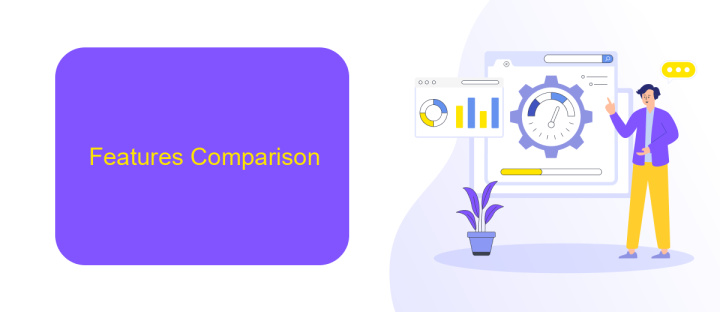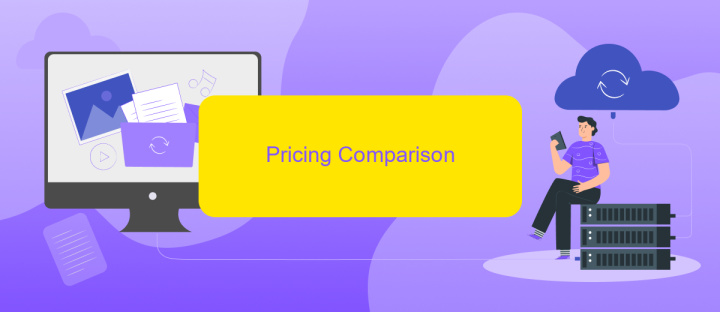UiPath Vs Celonis
In the rapidly evolving landscape of process automation and optimization, UiPath and Celonis have emerged as leading contenders. UiPath excels in robotic process automation (RPA), streamlining repetitive tasks, while Celonis specializes in process mining, offering deep insights into business processes. This article delves into a comparative analysis of these two powerful platforms, highlighting their strengths, applications, and key differences.
Introduction
In today's rapidly evolving business landscape, process automation and optimization are critical to maintaining a competitive edge. UiPath and Celonis are two leading platforms that offer distinct solutions for enhancing operational efficiency. While UiPath focuses on robotic process automation (RPA), Celonis excels in process mining and analytics. Understanding the strengths and applications of each can help organizations make informed decisions about which tool best suits their needs.
- UiPath: Specializes in automating repetitive tasks through RPA.
- Celonis: Provides deep process insights and analytics through process mining.
- Integration: Both platforms can be integrated with various systems to enhance their functionalities.
For seamless integration of these tools with existing business systems, services like ApiX-Drive offer valuable support. ApiX-Drive enables efficient data transfer and synchronization between platforms, ensuring that businesses can leverage the full potential of UiPath and Celonis without technical hurdles. By understanding the unique capabilities of each platform and utilizing integration services, organizations can achieve significant improvements in productivity and process optimization.
Features Comparison

UiPath and Celonis offer distinct features tailored to different aspects of process automation and optimization. UiPath excels in robotic process automation (RPA), providing a robust platform for automating repetitive tasks across various applications. It supports extensive integrations with third-party tools and offers a user-friendly interface for designing workflows. UiPath's Orchestrator allows for centralized management of robots, ensuring seamless execution and monitoring of automated processes.
Celonis, on the other hand, focuses on process mining and analytics, enabling organizations to gain deep insights into their business processes. It leverages data from existing systems to identify inefficiencies and areas for improvement. Celonis provides powerful visualization tools and real-time analytics to optimize processes continuously. For integration purposes, services like ApiX-Drive can be utilized to connect Celonis with other enterprise systems, facilitating smooth data flow and enhanced process visibility. Both platforms complement each other, with UiPath driving automation and Celonis offering comprehensive process insights.
Pricing Comparison

When comparing the pricing models of UiPath and Celonis, it's essential to consider the value each platform offers relative to its cost. Both platforms provide scalable solutions, but their pricing structures cater to different business needs and sizes.
- UiPath: UiPath offers a flexible pricing model with options for individual users, small teams, and large enterprises. The pricing is generally subscription-based, with additional costs for advanced features and add-ons. UiPath also provides a free tier for small-scale projects and trials.
- Celonis: Celonis uses a value-based pricing approach, often tailored to the specific needs of the client. This means that costs can vary significantly depending on the scope of the process mining and analytics requirements. Celonis typically requires a more substantial initial investment compared to UiPath.
Ultimately, the choice between UiPath and Celonis should be based on the specific needs and budget of your organization. For those looking to integrate these platforms with other business tools, services like ApiX-Drive can offer seamless integration solutions, enhancing the overall value and functionality of both UiPath and Celonis.
Ease of Use Comparison

When comparing the ease of use between UiPath and Celonis, both platforms offer intuitive interfaces, but they cater to different user needs. UiPath is designed with a drag-and-drop interface that simplifies the automation process, making it accessible even to non-technical users. This user-friendly design enables quick deployment and minimal learning curve.
On the other hand, Celonis focuses on process mining and analytics, which requires a deeper understanding of business processes. While Celonis provides comprehensive tutorials and documentation, it may take more time for users to become proficient, especially those without a background in data analysis.
- UiPath: Drag-and-drop interface, suitable for non-technical users.
- Celonis: Advanced analytics tools, requires understanding of business processes.
- ApiX-Drive: Facilitates integration setup, enhancing both platforms' usability.
In summary, UiPath is more user-friendly for those new to automation, while Celonis offers powerful analytics capabilities that may require additional training. Utilizing services like ApiX-Drive can streamline integration processes, making both platforms more efficient and easier to use.
Conclusion
In conclusion, both UiPath and Celonis offer robust solutions for process automation and optimization, each with its unique strengths. UiPath excels in robotic process automation (RPA), providing extensive tools for automating repetitive tasks and integrating seamlessly with various systems. On the other hand, Celonis specializes in process mining, offering deep insights into business processes and identifying inefficiencies to enhance overall performance.
Choosing between UiPath and Celonis depends largely on the specific needs and goals of your organization. For those looking to streamline and automate routine tasks, UiPath is a strong contender. Meanwhile, if your focus is on gaining a comprehensive understanding of your business processes and driving continuous improvement, Celonis is the better choice. Additionally, leveraging integration services like ApiX-Drive can further enhance the capabilities of both platforms by facilitating seamless data exchange and process synchronization across different systems.
- Automate the work of an online store or landing
- Empower through integration
- Don't spend money on programmers and integrators
- Save time by automating routine tasks
FAQ
What are the primary differences between UiPath and Celonis?
Can UiPath and Celonis be used together?
Which tool is better for process optimization?
Is coding knowledge required to use UiPath and Celonis?
How can I integrate UiPath and Celonis with other business tools?
Strive to take your business to the next level, achieve your goals faster and more efficiently? Apix-Drive is your reliable assistant for these tasks. An online service and application connector will help you automate key business processes and get rid of the routine. You and your employees will free up time for important core tasks. Try Apix-Drive features for free to see the effectiveness of the online connector for yourself.


